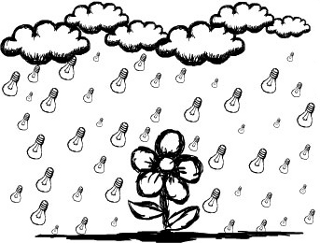Innovation did not stop, they just went into the clouds
 Professor and entrepreneur Steve Blank in his recent interview predicted the decline of Silicon Valley and the end of innovation. He believes that the Valley has turned into a swamp, where, like the hordes of midges, only social networks breed and multiply. Of course, there is some truth in this, but behind the trees he did not see the forest. Perhaps most innovations in Silicon Valley come from Google and Elon Musk, according to Blank, but cloud technologies provide everyone with such opportunities for innovation, which previously only corporations had.
Professor and entrepreneur Steve Blank in his recent interview predicted the decline of Silicon Valley and the end of innovation. He believes that the Valley has turned into a swamp, where, like the hordes of midges, only social networks breed and multiply. Of course, there is some truth in this, but behind the trees he did not see the forest. Perhaps most innovations in Silicon Valley come from Google and Elon Musk, according to Blank, but cloud technologies provide everyone with such opportunities for innovation, which previously only corporations had.Tod Hoff, of High Scalability, wrote this Monday an article about Pinterest infrastructure, based on Amazon and its phenomenal growth, in which he protects modern start-ups from the accusations of Blanca. This is what he answers to skeptics:
Pinterest and Instagram haven't really advanced science and technology, but this is more a sign of how powerful the power of cloud technologies is today than what Silicon Valley has turned away from innovation. The growth figures and estimates of the value of these companies are so great that, out of habit, we believe that there must be some kind of revolutionary supertechnology behind them. But revolutionism is in fact much thinner - it is how easy it is to achieve such growth today by implementing a successful idea. Get used to it!
Hoff did not say this in plain text, but he certainly implied that cloud technologies changed the rules of the game. Yes, there are a lot of Instagram and Pinterest on the market, but there are also such as DNAnexus or Bina Technologies that use clouds (and “big data” technologies) as a platform for revolutionary genetic research. Romanian startup SkinScan has created just an application for the iPhone, but which application? It warns the owner about the probable disease of cancer! And this is only the beginning - entrepreneurs have only recently realized what things are possible with the help of cloud technologies.
Even if social media and networks dominate today's start-ups, they are part of a process of fundamental change related to how people communicate with each other thanks to clouds and affordable mobile devices. Of course, Facebook, like other social startups, does not have any kind of super-ideas and its architecture does not set supercomplicated tasks for engineers. But they are all part of a growing ecosystem. This is not as significant as a cure for cancer, but it is also important.
In addition, if you want to make money, is it not worth investing a little bit in a business that could potentially start growing at a frantic pace? The money earned by investors on Pinterest or Instagram can then be invested, including in startups with serious ideas and technologies. And there are such startups.
')
Calxeda , SeaMicro ( recently purchased by AMD ) and Tilera create revolutionary servers and microprocessors, a lot of “hard” startups , especially in the field of environmentally friendly technologies, are precisely those areas that Blank talked about as declining. I recently wrote about the Skybox startup , which received $ 70 million in investments to create a network of microsatellites and analyze high-precision images of the earth’s surface.
The upcoming “Cloud Finds its Structure” conference in June will deal with the cloud infrastructure and platforms that form the basis for a new ecosystem of applications. Among these applications there are both revolutionary and absolutely banal ones, but we still have a lot of innovations waiting for us. We are becoming increasingly aware that it is possible to create in a world where a global network of interconnected devices is working continuously and everywhere. I would not say that this is such a small idea.
Source: https://habr.com/ru/post/144322/
All Articles